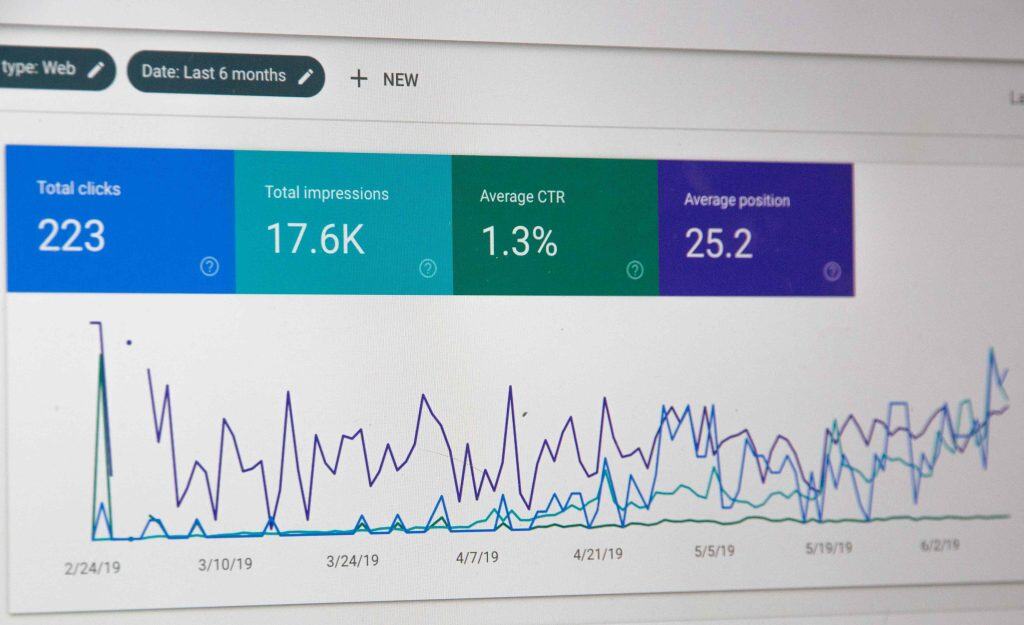Learn How to Optimize Your Amazon Affiliate Website for Higher Rankings and Boost Your Affiliate Marketing Earnings.
Welcome to the world of SEO for Amazon Affiliate Websites! This guide will provide you with the knowledge and strategies to build a successful Amazon affiliate business. We’ll cover key areas, including:
- The fundamentals of affiliate marketing.
- Effective SEO techniques.
We’ll also offer actionable tips to boost your website’s visibility and generate revenue through the Amazon Associates program. Whether you’re a beginner or an experienced affiliate marketer, this resource will help you optimize your affiliate website and maximize your earnings.

Understanding Affiliate Marketing
What is Affiliate Marketing?
Affiliate marketing is a digital marketing strategy where an affiliate marketer earns a commission for marketing another person’s or company’s products. The affiliate simply searches for a product they enjoy, then promotes that product and earns a piece of the profit from each sale they make. The sales are tracked via affiliate links from one website to another. Amazon’s affiliate program, known as Amazon Associates, is a popular choice. This involves creating affiliate content on your affiliate site that links to Amazon affiliate products. When a customer clicks an affiliate link and makes a purchase, the affiliate earns an affiliate commission.
Benefits of Using Affiliate Links
Using affiliate links offers numerous benefits for website owners looking to monetize their content, including cost-effectiveness and focusing on creating valuable content. It’s a cost-effective way to generate revenue because you don’t need to create your own products or handle inventory. As an Amazon affiliate, you can simply promote Amazon affiliate products and earn a commission on sales generated through your affiliate links. It allows you to focus on creating valuable affiliate content and driving traffic to your affiliate site. This synergy between SEO and affiliate marketing, when executed well, can lead to improved ranking in search results and, ultimately, higher earnings. It’s a great way to get a commission.
Common Mistakes in Affiliate Marketing
Many aspiring Amazon affiliate marketers stumble in a few key areas. These issues often include:
- Stop neglecting SEO and keyword research, which can lead to targeting the wrong audience.
- Failing to create high-quality, engaging affiliate content that provides value to the reader.
- Insufficiently disclosing affiliate relationships, leading to legal issues and eroding trust.
- Ignoring technical SEO aspects, negatively impacting ranking and site performance.
Make sure that your Wordpress SEO is set up correctly. Also, don’t forget to build a successful Amazon affiliate website!

Building a Successful Amazon Affiliate Website
Choosing the Right Niche
Selecting the right niche, aligning with interests/expertise, and conducting thorough keyword research are paramount. Your chosen niche should align with your interests and expertise, making it easier to create content and build authority. Conducting thorough keyword research is crucial to identify profitable keywords with manageable competition. Consider the search volume and potential for monetization within the niche. A well-defined niche helps you target the right audience and create content that resonates with their needs. Analyzing trending products on Amazon and identifying gaps in the market can also guide your niche selection process. Remember, a targeted niche site with strategic Amazon affiliate marketing can give you a better opportunity at a high search engine ranking.
Setting Up Your Website Domain
Choose a domain name that is relevant, easy to remember, brandable, and SEO-friendly. Setting up your website domain is a foundational step in building your Amazon affiliate website. Choose a domain name that is relevant to your chosen niche and easy to remember. A good domain name should also be brandable and SEO-friendly. Consider using keywords related to your niche in the domain name, but avoid making it too long or cumbersome. Register your domain name through a reputable domain registrar and ensure that you have full control over your domain settings. After securing your domain, set up web hosting with a provider that offers reliable performance and scalability. Think about using Wordpress to design your site. A Wordpress site is a great way to integrate an Amazon affiliate link.
Integrating Affiliate Links Effectively
Strategically place relevant affiliate links with clear call-to-actions while avoiding excessive linking. Integrating affiliate links effectively is crucial for generating revenue through your Amazon affiliate website. Place affiliate links strategically within your content, ensuring they are relevant and add value to the reader. Use clear call-to-actions to encourage clicks on your affiliate links. Avoid excessive linking, as it can detract from the user experience and potentially harm your SEO ranking. Cloak your affiliate links to make them more visually appealing and easier to manage. Regularly monitor the performance of your affiliate links using analytics tools to identify which links are generating the most clicks and sales. By optimizing your affiliate link placement and presentation, you can maximize your affiliate commission and improve your affiliate site’s earning potential. This is how to build a successful Amazon affiliate site.

SEO Strategies for Amazon Affiliate Marketing
SEO Tips for Affiliate Websites
1. Focus on Keyword Intent
Affiliate websites should target keywords that reflect strong buyer intent. Phrases like “best [product],” “top [category] tools,” or “[product] reviews” often attract users ready to make a purchase. Optimizing content for these long-tail keywords helps drive qualified traffic and improve conversion rates.
2. Create High-Quality, Original Content
Search engines prioritize useful, unique content. Affiliate marketers should avoid duplicating manufacturer descriptions or other affiliate blogs. Instead, they should offer detailed comparisons, hands-on reviews, case studies, or unique insights that provide real value to readers.
3. Optimize Site Structure and Internal Linking
A clean, logical site structure helps both users and search engines navigate the website efficiently. Affiliate sites should use silo structures, category pages, and contextual internal links to strengthen topical relevance and improve crawlability.
4. Improve Page Speed and Mobile Experience
Most affiliate visitors browse on mobile. Ensuring that the site loads quickly, is mobile-responsive, and provides an intuitive user experience can reduce bounce rates and increase engagement—factors that positively influence SEO rankings.
5. Use Structured Data Markup
Affiliate sites can benefit from using schema markup (especially Review, Product, and FAQ schema). This helps search engines understand the content better and can improve visibility in SERPs with rich results like star ratings or price ranges.
6. Build Relevant, Quality Backlinks
Earning backlinks from niche-relevant sites boosts a website’s authority. Strategies such as guest posting, expert roundups, HARO (Help a Reporter Out), and resource link building help affiliate marketers create a stronger link profile that supports SEO growth.
7. Optimize Affiliate Links and Disclosures
Search engines should be able to differentiate content from affiliate links. It’s recommended to use rel=”sponsored” or rel=”nofollow” attributes on affiliate links and include clear affiliate disclosures to comply with Google guidelines and maintain transparency.
8. Publish Consistently and Update Older Content
Regular publishing of helpful content keeps the site fresh and active. Additionally, updating older posts with new information, product changes, or improved formatting can help recover or boost existing rankings.
9. Monitor Analytics and SEO Performance
Using backlink checker tools like Google Analytics, Google Search Console, and SEO platforms (e.g., Ahrefs, SEMrush) helps affiliate site owners track keyword rankings, traffic sources, and backlink profiles. Continuous monitoring allows for timely adjustments to strategy.
10. Avoid Thin Content and Over-Optimization
Affiliate sites should steer clear of low-value pages with little substance. Every page should serve a clear purpose and provide actionable, engaging content. Over-optimizing with keyword stuffing or irrelevant backlinks can result in penalties or lost rankings.
Optimizing Content for Search Results
Optimize content by conducting keyword research and integrating keywords naturally, ensuring high-quality, engaging content, and building relevant links. Optimizing content is paramount for achieving high ranking in search results for your Amazon affiliate marketing website. Conduct comprehensive keyword research to identify the terms your target audience is using. Integrate these keywords naturally into your titles, headings, meta descriptions, and body content. Ensure your content is high-quality, engaging, and provides value to the reader. Optimize images with descriptive alt tags containing relevant keywords. Building internal and external links to authoritative sources can also boost your website’s SEO. By focusing on creating content that is both user-friendly and search engine optimized, you can improve your affiliate site’s visibility and drive more organic traffic from search engine optimization.
Using Keywords to Enhance Visibility
Use keywords effectively by conducting thorough research, incorporating them strategically, and monitoring performance while avoiding keyword stuffing. Leveraging keywords effectively is essential for enhancing the visibility of your Amazon affiliate website. Conduct thorough keyword research to identify the most relevant and high-traffic keywords for your chosen niche. Incorporate these keywords strategically into your content, including page titles, headings, meta descriptions, and image alt tags. Use keyword research tools to discover long-tail keywords, which can attract a more targeted audience. Avoid keyword stuffing, as it can negatively impact your website’s ranking. Monitor your keyword performance using analytics tools and adjust your strategy as needed. By optimizing your affiliate content with relevant keywords, you can improve your affiliate site’s ranking and drive more organic traffic from the search engine.

Marketing Strategies for Amazon Affiliate Sites
Leveraging Social Media
Use social media to share content, engage with the target audience, use relevant hashtags, and run targeted ads. Social media marketing can be a powerful tool for driving traffic to your Amazon affiliate website. Platforms like Facebook, Instagram, and Twitter provide opportunities to share your affiliate content and engage with your target audience. Create compelling posts that highlight the benefits of the affiliate products you’re promoting. Use relevant hashtags to increase the visibility of your content and attract new followers. Run targeted ads to reach specific demographics interested in your niche. Social media engagement can significantly boost your affiliate marketing efforts and increase clicks on your affiliate links, leading to higher affiliate commission. Remember that consistent, valuable content is key to building a loyal following and driving traffic back to your affiliate site. Make sure to check the affiliate program guidelines of Amazon’s affiliate program before posting an affiliate link.
Affiliate Promotions with Email Marketing
Email marketing involves building an email list, crafting compelling campaigns, segmenting the list, and using automation tools. Email marketing is an effective strategy for nurturing leads and promoting your Amazon affiliate products directly to your target audience. Build an email list by offering valuable content or free resources in exchange for email sign-ups. Craft compelling email campaigns that highlight the benefits of the affiliate products you’re promoting and include clear call-to-actions. Segment your email list based on interests and demographics to personalize your messaging and improve engagement. Use email marketing automation tools to schedule emails and track campaign performance. Regular email communication can help build trust with your audience and drive more traffic to your Amazon affiliate website, boosting your affiliate commission and overall success in affiliate marketing. By providing valuable affiliate content through email, you can establish yourself as a trusted source and increase conversions on your affiliate links.
Creating Amazon Affiliate Content that Converts
Creating Amazon affiliate content that drives clicks and sales requires a strategic mix of persuasive writing, user-focused value, and smart SEO practices. The goal isn’t just to promote products — it’s to help readers make informed purchasing decisions while naturally guiding them to click your affiliate links.
1. Understand Your Audience’s Intent
Start by identifying what your readers are looking for. Are they comparing products? Seeking reviews? Looking for budget-friendly options? Your content should meet that intent directly. For example, “Best Budget Laptops for Students” targets price-conscious buyers, while “Top 5 Noise-Cancelling Headphones for Travel” appeals to quality-focused travelers.
2. Use Compelling Headlines and Introductions
Your headline should be benefit-driven and clear. Pair it with a strong intro that tells readers exactly what they’ll learn. Mention that the page may contain affiliate links (for transparency) and reassure readers that your recommendations are honest and research-based.
3. Focus on Problem-Solution Format
Rather than pushing products, frame your content around solving problems. For instance, instead of “Buy This Vacuum,” use “Struggling with Pet Hair? These Vacuums Actually Work.” This creates trust and positions your affiliate link as a helpful next step.
4. Include In-Depth Product Reviews or Comparisons
Break down features, pros and cons, who each product is best suited for, and why you recommend it. Use bullet points for clarity and include real-world use cases when possible. Adding visuals (Amazon images, infographics, or demo videos) can also boost conversions.
5. Use Clear and Strategic Call-to-Actions (CTAs)
Don’t just say “Buy Now.” Use context-relevant CTAs like:
- “Check latest price on Amazon”
- “See customer reviews”
- “View more colors and styles”
These drive clicks more naturally.
6. Incorporate SEO Best Practices
Target long-tail keywords like “best waterproof Bluetooth speaker under $50.” Optimize your title, headers, meta description, and image alt text. Interlink related posts to boost session time and improve rankings.
7. Stay Compliant with Amazon’s Affiliate Policies
Always include a disclosure that you may earn from qualifying purchases. Avoid placing pricing info that may change or using Amazon logos without permission.
8. Update Content Regularly
Affiliate content performs best when it’s up to date. Replace discontinued products, check for broken links, and update your recommendations as new models or better alternatives emerge.

Monitoring and Improving Your Affiliate Site Performance
Using Analytics to Track Clicks
Implement analytics tools like Google Analytics to monitor traffic, track click-through rates, and identify popular content. Implementing analytics is crucial for tracking the performance of your Amazon affiliate website. Tools like Google Analytics allow you to monitor website traffic, track click-through rates on your affiliate links, and identify your most popular content. By analyzing this data, you can gain insights into what’s working and what’s not, allowing you to optimize your affiliate marketing strategies accordingly. Track the performance of different affiliate products and affiliate links to identify which ones are generating the most revenue. Monitor your affiliate site’s bounce rate and time on site to assess user engagement and identify areas for improvement. Using analytics effectively will help you make data-driven decisions to improve your affiliate website’s performance and increase your affiliate commission.
Adjusting Strategies Based on Performance
Regularly adjust strategies based on analytics data, experiment with different approaches, monitor competitors, and stay updated with SEO trends. Regularly adjusting your strategies based on performance is vital for long-term success as an Amazon affiliate marketer. Analyze your analytics data to identify areas where your affiliate website is underperforming. Experiment with different content formats, affiliate link placements, and marketing strategies to see what resonates best with your target audience. Monitor your competitor’s strategies and identify opportunities to differentiate yourself. Stay up-to-date with the latest SEO trends and algorithm updates to ensure your website remains search engine optimized. Continuously test, measure, and refine your approach to maximize your affiliate commission and achieve your goals in the competitive world of affiliate marketing. Make sure to find the right keywords for your affiliate site.
Avoiding Spam Sites and Enhancing Credibility
Maintain credibility by avoiding spammy practices, creating high-quality content, disclosing affiliate relationships transparently, and building a strong online presence. Maintaining a reputable and credible Amazon affiliate website is essential for building trust with your target audience and achieving long-term success. Avoid practices that can be perceived as spammy, such as keyword stuffing, excessive affiliate link placement, and deceptive marketing tactics. Focus on creating high-quality, valuable affiliate content that provides genuine benefit to your readers. Disclose your affiliate relationships transparently with a clear and concise affiliate disclaimer. Build a strong online presence by engaging with your audience on social media and participating in relevant online communities. By prioritizing transparency, honesty, and value, you can establish yourself as a trusted authority in your niche and attract a loyal following to your affiliate site.

Frequently Asked Questions
What is SEO in Amazon Affiliate Marketing?
SEO in Amazon affiliate marketing refers to the strategies and tactics used to optimize your website and content for search engines, ensuring that your affiliate links to Amazon products rank higher in search results. This involves using relevant keywords, creating high-quality content, and building backlinks to improve visibility and drive traffic to your affiliate site.
How do I choose a niche for my Amazon affiliate website?
Choosing a niche for your Amazon affiliate website is crucial for your success. Consider your interests and expertise, potential traffic volume, and the competitiveness of affiliate networks in that niche. A well-defined niche will help you target specific audiences, making it easier to create content that resonates and converts into affiliate sales.
What are the best practices to make my affiliate site effective?
To make your affiliate site effective, focus on creating high-quality, informative content that engages your audience. Use SEO tactics such as optimizing your SEO title, adding affiliate links strategically, and ensuring your site is mobile-friendly. Additionally, consider using plugins to enhance functionality and improve user experience.
How can I get traffic to my affiliate blog?
To get traffic to your affiliate blog, implement a combination of SEO strategies and marketing techniques. Use social media to promote your content, engage in email marketing, and consider guest posting on other blogs. Collaborating with influencers or utilizing paid advertising can also drive targeted traffic to your site.
Why is SEO important for Amazon affiliate sites?
SEO is important for Amazon affiliate sites because it improves your site’s visibility in search engines, leading to more organic traffic. When potential customers find your content through search results, they are more likely to click on your affiliate links, ultimately increasing your chances of making money through Amazon affiliate marketing.
How can I effectively add affiliate links to Amazon products?
To effectively add affiliate links to Amazon products, ensure that the links are relevant to your content and provide value to your audience. Use descriptive anchor text, and place links naturally within your articles. Additionally, consider using call-to-action phrases that encourage users to click on the links without being overly promotional.
What impact do hosting companies have on my SEO efforts?
Hosting companies can significantly affect your SEO efforts, as site speed and uptime are critical factors for search engine rankings. Choose a reliable hosting provider that offers fast loading times and minimal downtime to ensure your site performs well, improving user experience and helping your SEO.
What are the common types of affiliate marketing strategies?
Common types of affiliate marketing strategies include pay-per-click (PPC), pay-per-sale (PPS), and pay-per-lead (PPL). Each type caters to different objectives and can be utilized based on your affiliate account goals. Understanding these strategies can help you optimize your approach and increase affiliate sales.
How can a review website help with my Amazon affiliate marketing?
A review website can help with your Amazon affiliate marketing by providing in-depth analysis and comparisons of products. By offering honest and comprehensive reviews, you build trust with your audience, which can lead to higher conversion rates when they click on your affiliate links to Amazon products.


